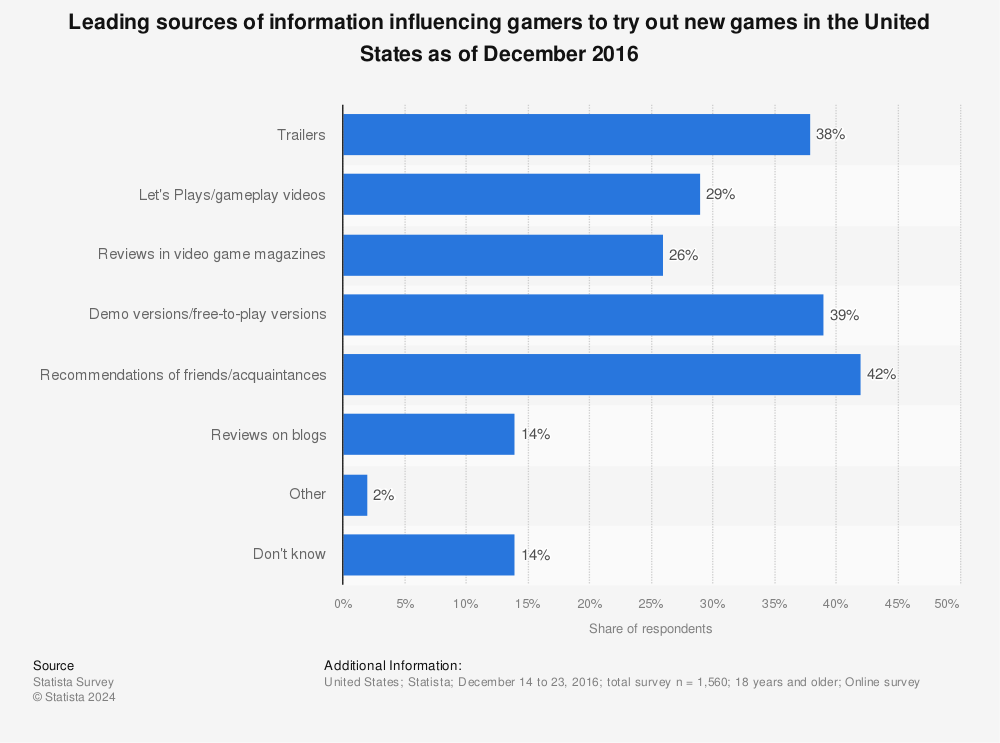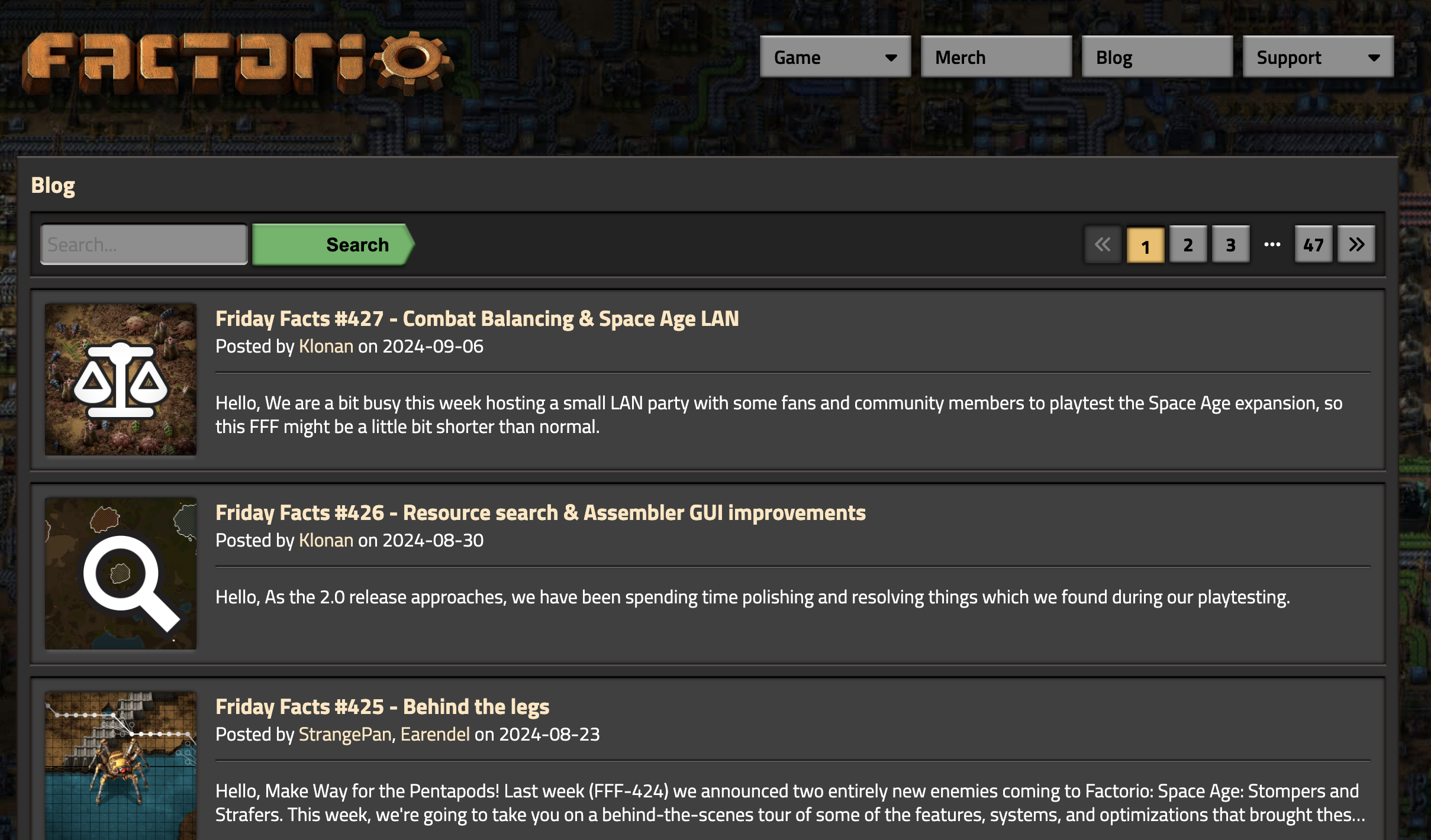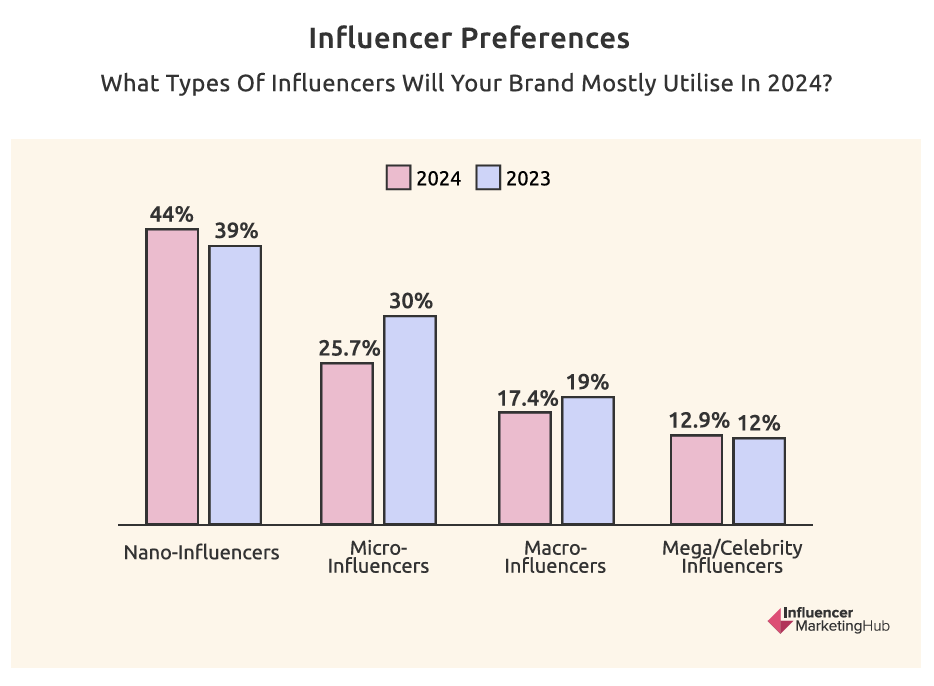Memorable is the word you must focus on as you prepare for your game’s launch. In an industry as competitive as gaming, the ability to stand out separates success from darkness.
But the truth is that a successful launch takes more than a single post on social media. You need a strategy beyond the basics to make a real impact.
Today, we’ll show you elements to focus on when building your strategy. Launching your game is about captivating your audience, giving them a glimpse of your vision, and laying the foundation for long-term success. So, how can you ensure that your launch will grab attention and keep players returning for more?
At GameRebellion, we’ve got 4 promotional tips to help you boost your indie game launch. This article shares powerful tips to ensure your launch makes waves and grabs headlines!
And that’s just the beginning! Plenty of other essential factors can help your game stand out when released. If you're eager to learn more, we’ll show you how to define your game’s target audience with user personas and provide our ultimate guide to game marketing success.
Today, we’re focusing on tips for your trailers, content marketing, influencer campaigns, and social media strategies. We’ll equip you with everything you need to make your game launch unforgettable!
1. The Power of a Trailer
Did you know? Over 8,576 games are available on Steam, and we’re just talking about Steam! More than 700 thousand mobile games are on Google Play and Apple's App Store. Honestly?
Your game is a drop in the ocean, and we’re not saying that to scare you! It’s essential to understand how important it is to stand out among so many titles.
Grabbing players' attention is vital. One of the best ways to achieve this is by crafting compelling trailers. You need at least one to showcase your game on your storefront.
Trailers offer a cost-effective and powerful way to highlight your game’s unique selling points in a concise, engaging format that leaves an impact.
Why? The graph below shows the leading sources of information influencing gamers to try out new games in the United States as of December 2016. During the survey, 38 percent of respondents stated they felt most influenced to test a new game by trailers.

Sources influencing gamers to test new games in the U.S. in 2016. Published by Alexander Kunst on September 3, 2019, on Statista.
A well-crafted trailer sets the tone, introduces the world and gameplay, and builds excitement, leaving players eager to learn more. Gamers who watched a trailer were most influenced to test a new game.
It’s an awesome tool for catching players’ eyes and sparking their interest in buying the game. It gives them a quick, visually engaging snapshot showing what makes the game stand out, building excitement and anticipation.
It's a great way to showcase the heart of the game and draw them in. Another study confirms this; the University of Hawaii shows that even non-gamers are likelier to buy a game after watching a trailer.
"… videos provide a platform for the consumer to evaluate the video game as a product before purchase. (…) video content may affect consumer behaviour in various stages of the purchase decision-making process.”
Text from “View, play and pay? – The relationship between consumption of gaming video content and video game playing and buying” 53rd Hawaii International Conference on System Sciences, 2020
Of course, it’s only one piece of the puzzle. Offering multiple ways for players to explore the game can boost their desire to play. Alongside the trailer, gameplay videos can dig deeper into the mechanics, helping players fully grasp the experience waiting for them.
How do you Captivate Players with a Trailer
Let’s explore two types of gameplay content. This isn’t set in stone but is a helpful way to distinguish between different approaches. You can undoubtedly have a trailer that seamlessly blends both elements, but seeing what each type brings to the experience is interesting.
Cinematic Trailers
Cinematic trailers are about storytelling and forging an emotional connection with your audience. These trailers usually use pre-rendered scenes, stunning animations, and dramatic music to introduce your game’s universe, characters, and overall tone.
While they may not show actual gameplay, they aim to immerse viewers in the game’s world and narrative, drawing them in with atmosphere and story.
These trailers are compelling for generating early hype during major announcements or game conventions. They set the stage for games with rich narratives, acting as the initial hook that gets players emotionally invested before they've even picked up the controller.
Take This War of Mine as an example. The teaser trailer cleverly plays into the familiar codes of blockbuster war games like Call of Duty, with intense, heroic music and slow-motion scenes that make it feel like we’re gearing up for another high-stakes military shooter. It sets the stage for what we might expect—a heroic journey, with the player in the role of a soldier on the battlefield.
Did you catch that twist? With footage and the right music, you can create a fantastic trailer. This format works incredibly well for games that focus on storytelling. In this case, it makes the trailer and the game shine instantly without needing a huge budget!
Gameplay Trailers
Gameplay trailers, on the other hand, focus on transparency and practicality. They showcase actual in-game footage, highlighting fundamental mechanics, user interfaces, and what playing feels like.
These trailers allow potential players to see what they’ll experience, from controls to combat systems, and offer a more grounded, realistic look at the game. Typically released closer to launch, they give a polished, detailed overview of the game, helping players decide if it's worth their time and money.
This Cult of the Lamb gameplay trailer masterfully unfolds the storyline while showcasing the game’s mechanics and style.
It’s simple yet impactful, relying not on a big budget or flashy production but on intelligent, efficient storytelling and visuals that perfectly capture the game’s essence.
Using Them Together
We’ve seen that a video trailer can be used for different goals. You know what? There are so many ways to use trailers! As we mentioned, the more angles you allow your players to experience your game, the more you capture their attention.
You can tap into their emotions, emphasize the action, highlight the fundamental mechanics, or focus on the characters and their stories. Each of these approaches can draw players in, and when blended, they create a richer, more engaging experience that truly showcases the game’s full potential.
Together, they create a comprehensive narrative that draws players in and convinces them to leap. 72% of players prefer to watch gameplay footage over a cinematic trailer. This combination of engaging visuals and in-depth gameplay insights is key to keeping your audience hooked.
Understanding your audience fully is essential to choosing the right type of trailer. If you're presenting your game to a specific niche, highlighting key elements in your trailer that this player base actively seeks is worth it.
Every gaming community has preferences, and a game will be perceived differently depending on whether it’s a AAA title or an indie game.
Extra tips for your game's Trailers:
- Capture the viewer’s attention in the first few seconds to guarantee instant engagement
- Highlight the game’s unique strengths and spark curiosity, making the audience excited to learn more.
- Keep the trailer clear, concise, and well-played, ensuring it’s easy to follow.
- Use music and sound effects to build an immersive atmosphere that enhances the viewer’s experience.
- End with a powerful call to action, directing viewers to your website or encouraging pre-orders.
- Ensure the trailer is visually organized, avoiding clutter, especially during complex scenes like multiplayer combat.
- Gradually reveal important game features, atmosphere, character abilities, and gameplay, keeping the audience intrigued.
- Keep videos short and impactful, ideally under five minutes, focusing on the game’s standout features.
- Add subtle text overlays or voiceovers to clarify important points without overwhelming the viewer, ensuring every key aspect is communicated effectively.
2. Compelling Content Strategy
Let’s move on to another key element for a successful game launch: your content strategy. Don’t underestimate it! Many games have turned into huge successes thanks to this. Trust us, we’ll share an example further down.
Content marketing offers the chance to build a genuine way to communicate around your game. Content can be anything. Whether announcing new features, sharing development updates, or even addressing bugs or fixes, it’s all an excellent opportunity to talk about your game.
Now, the real question is: how do you create high-quality content? What will make players want to dive deeper into your game or even buy it?
Importance of authentic communication in game development
One of the key strategies that more and more indie studios are embracing is the use of storytelling. Developing a strong story is a powerful way to extend your game’s narrative beyond the gameplay itself.
“Gen Z—35% of these respondents said they care about authenticity”. Statistic from ‘What consumers want from influencer marketing Influencer Marketing Followers’. Report published by SprootSocial in 2024.
Coffee Stain Studios took over several years to release Satisfactory, keeping it in early access. And guess what? The fan base stuck around the entire time. Even though the game wasn’t finished, the studio kept the excitement alive through its social media presence.
In this video, essentially a dev vlog, the community manager highlights the latest progress and bug fixes leading up to the game’s release. The whole thing is delivered with humour in a friendly and casual tone. This approach has become the trademark style that works brilliantly for Satisfactory.
You don’t have to rely on humour but must be authentic. This approach keeps players engaged, drawing them deeper into your game’s world, even when not actively playing. Authenticity builds trust and connection, which can be just as powerful as the gameplay itself.
The use of dev diaries and behind-the-scenes content to engage players
If you’re not comfortable on video, there are plenty of other options. You can write, showcase your artwork, or use audio recordings. There are so many ways to engage your audience, and each can be just as effective.
These pieces of content give players a deeper look into your game’s universe while building anticipation and emotional investment long before the game’s release.
Did you know that 80% of players are likelier to try a game if they’ve heard about it before its release? When players feel connected to the development process, they’re more likely to follow your journey and spread the word.
A strong online presence can differentiate between getting lost in the crowd or standing out, so start building that connection early.
Why blogging is still effective for game developers
A great example is Factorio, known for its blog, which masterfully combines detailed updates with a casual tone, keeping players informed and entertained. A blog (which can also work on a forum) is a good way to engage your audience by offering tips, discussing industry trends, and sharing your development journey.

Screenshot of the website Factorio.com
Though blogging might seem old-school, it remains a highly effective and resource-efficient form of content marketing. By connecting with players before your launch, you can build anticipation, establish trust, and create a loyal following, exactly what every game needs to succeed.
Tips for Optimizing Your SEO:
There’s no miracle recipe for success—being authentic isn’t enough. You have to optimize your content for SEO by improving keyword usage, enhancing page load speed, and regularly updating content.
- Share key progress updates with relevant keywords to keep your content fresh and search-friendly.
- Write unique content that reflects your personality, helping search engines and readers connect with your posts.
- Consistency is key for SEO: Set a posting schedule, whether weekly or bi-weekly, to signal to search engines that your blog is active and relevant.
- Discussing development hurdles humanizes your story and incorporates long-tail keywords that can rank for problem-solving queries.
- Focus on your game’s development, optimizing your content with your game-related keywords to improve search engine ranking.
- Schedule posts with strategic keywords ahead of time to capture traffic before and during your game’s launch.
Content strategy is a huge topic; you can talk about it for hours! There are so many ways to grab attention, but to keep it short, never stop sharing about your game.
3. Leveraging Community Engagement
Our third topic is community engagement because online presence is essential today. Why? It’s where your players are.
Whether through social media, forums, or gaming communities, being visible online helps build anticipation, foster engagement, and create a direct line of communication with potential players.
It also allows you to share updates, teasers, and behind-the-scenes content that can generate buzz before the game’s release.
The more active you are online, the more you can shape the narrative around your game and establish a loyal fan base even before launch.
You should make some waves and reach the right players for a good reason: Social networks can drive up to 20% of traffic to an indie game’s website.
Social media is a powerful tool for grabbing attention and engaging with our community in fresh ways.
As a highly visual platform, you can showcase your game through videos, expand on its details, and directly interact with players, gathering feedback and answering questions.
Massive Monster, the studio behind Cult of the Lamb, has been highly effective on TikTok. With over 600k followers and 8.2M likes, they use the platform to share regular mini-updates that keep fans informed and engaged.
They also launched a successful Twitch Drop campaign, which brought the community together, provided updates, and rewarded loyal players.
Massive Monster’s approach demonstrates how consistent updates and community involvement can help keep players engaged, both in-game and across social platforms.
Choose your main platform
We strongly advise you to choose one specific social media platform to share your content. Managing social media is time-consuming and hard work.
You’re already handling the development of your game and might not have the time to manage your social media communication, so efficiency is key.
The idea is to focus on one main platform to maximize your reach while minimizing your workload. Most studios are present on multiple platforms, but they often have a preferred channel where they publish all their content.
This is usually where they have the most followers or the highest engagement with their community.
Take Coffee Stain Studios, for example—they primarily focus their presence on X. You don’t need to be everywhere at once; it’s more effective to concentrate on the social media platform that best aligns with the content you want to share.
And if you decide to communicate on TikTok, we’ve put together a guide on the best strategies for game developers just for you.
4. Boost Your Game's Launch with Content Creators
Alright, last one! Using influencers as a launch strategy can massively expand your game’s reach. By partnering with influencers who align with your game’s style and target audience, you will tap into a dedicated follower base prone to follow their influencer’s recommendations.
Whether through gameplay streams, reviews, or sponsored content, these collaborations can build immediate hype and drive engagement right from the start.
Influencers have a huge impact on the gaming world. A YouTube post from a top influencer can increase game usage by 0.7% and sales by 1.6% on the day it’s published. It doesn’t just boost visibility, it also creates genuine excitement and buzz around your game, which is perfect right ahead of a launch!

We can see a significant rise in Micro-influencers from 2023 to 2024. Photo provided by Influencer MarketingHub, 2024
One of the most exciting aspects of influencer marketing is how it adapts to any budget you’re working with. Whether it’s a short burst of content or a longer, strategic campaign, you can shape it to fit your goals.
Here’s where it gets interesting: micro and nano influencers, while more affordable, actually bring stronger engagement. With micro-influencers averaging a 2.8% engagement rate, you’re not just saving money—you’re reaching an audience that’s better connected, more responsive, and more invested in what they’re seeing.
How content creators helped make Fall Guys a viral hit
Content creators can shape a game’s future, as proven by Fall Guys: Ultimate Knockout. When it launched in August 2020, the game hit over 11 million PlayStation 4 and PC players within days.
The campaign generated over 100 million YouTube views and over 10 million social media followers for the creators involved. Influencers are pivotal in promoting games by reaching vast, engaged audiences.
By showcasing gameplay, offering authentic opinions, and interacting with their communities, influencers can generate excitement and increase a game's visibility.
Their reach and credibility help introduce games to new potential players, while their content often sparks discussions and shares across social media platforms, driving further engagement. The lesson? Influencers don’t just promote your game; they can turn it into a viral sensation.
Best Practices for Promoting Your Game with Influencers
- Look for influencers who already engage with similar game genres and have an audience that aligns with your target demographic.
- Set clear expectations and goals, ensuring the influencer understands your game inside and out for more effective promotion.
- Allowing influencers the freedom to create their own content often results in more authentic, engaging promotions that resonate with their followers.
- Whether cash, free products, or revenue sharing, being upfront about compensation builds trust and strengthens your relationship.
For high-impact influencer campaigns that elevate your brand and engage your community, look no further than Elusive Talents Agency, powered by GameAddik.
What’s Next?
Whether you're a first-time indie developer or a seasoned studio, the tips we've shared here are designed to help you create a lasting impression from the beginning.
From crafting trailers that capture attention to building strong social media engagement, each element is crucial in making your launch memorable and impactful. As you start putting these strategies into action, remember that the goal is to promote your game and build a lasting connection with your audience.
- In a competitive gaming industry, standing out is key to success.
- A successful game launch requires a strategy, not just social media posts.
- Trailers grab attention, highlight unique selling points and generate excitement.
- Combining both trailer styles creates a richer, more engaging experience.
- Social media engagement builds strong connections with your audience and maintains excitement.
- Consistent content sharing, like updates or dev logs, keeps players interested.
- Influencer marketing helps expand reach and generate buzz with a flexible budget.
This is just the beginning of your journey. These strategies can be expanded and tailored to fit your game's unique needs. To truly master every aspect of your marketing approach and maximize your game’s visibility, we encourage you to dive deeper into our other articles and solutions.
There, you’ll find more in-depth insights and actionable tips to take your promotion efforts to the next level. Whether you’re looking to learn market trends, understand your target audience, or discover your competition, we’re here to guide you every step of the way!









